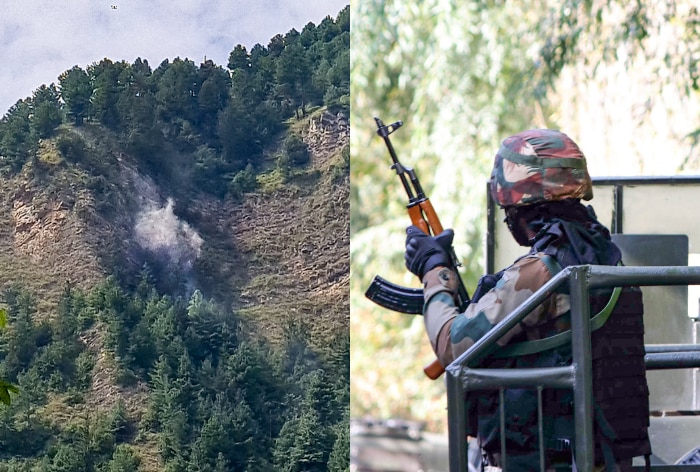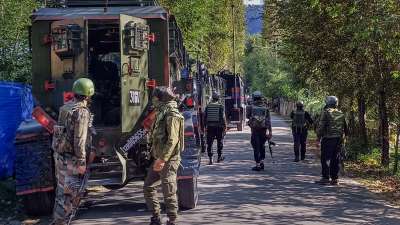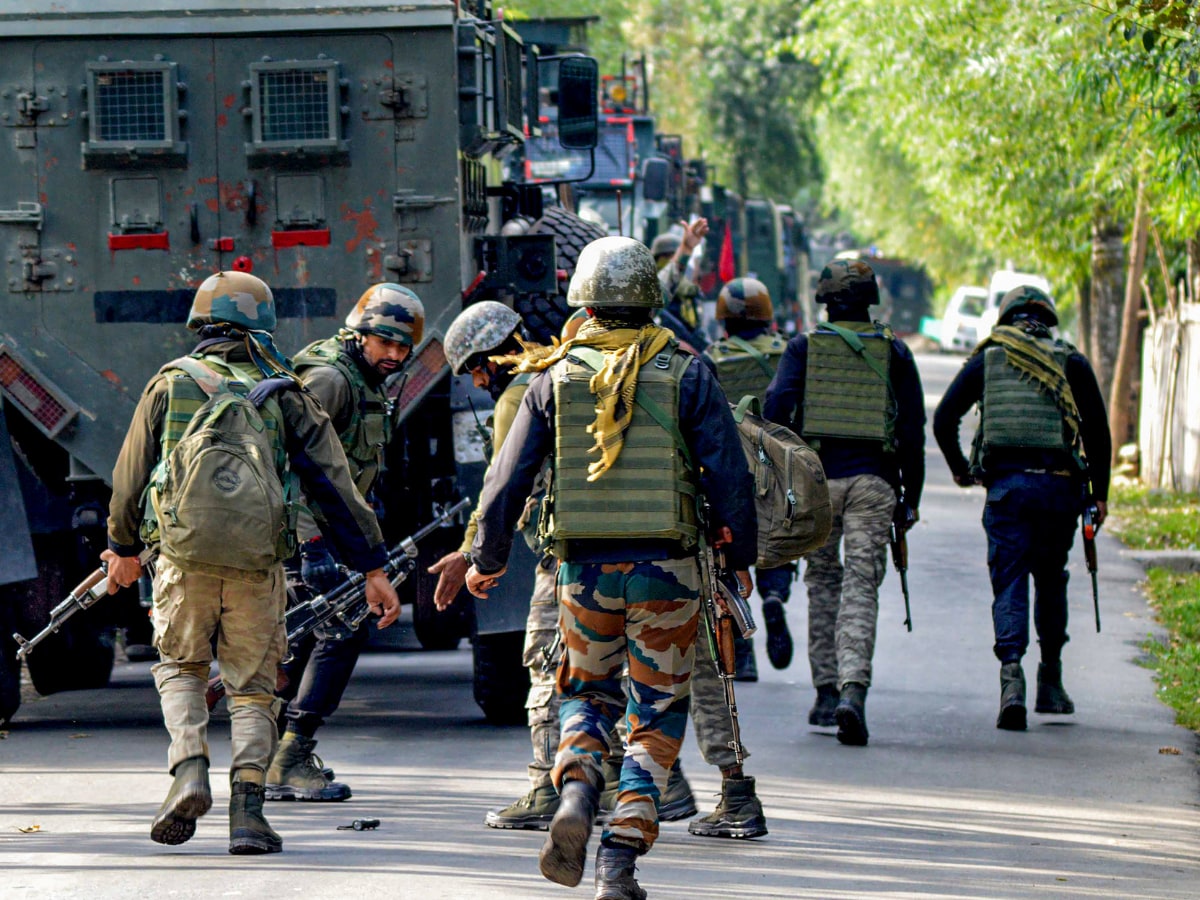Indian Army Executes Precision Strike on Terrorist Hideout in J&K’s Anantnag District

Indian Army Executes Precision Strike on Terrorist Hideout in J&K’s Anantnag District
In a swift and decisive operation, the Indian Army successfully targeted a terrorist hideout in the Anantnag district of Jammu and Kashmir, leaving the militants with no choice but to flee for their lives. Drone footage that recently surfaced on social media captured the dramatic moments of the operation, highlighting the determination of the Indian security forces in their relentless pursuit of peace and stability in the region.
The Dramatic Aerial Footage
The drone footage, which has been widely shared on social media, provides a unique and chilling perspective of the counter-terrorism operation. It shows the precision with which the Indian Army struck at the heart of the terrorist network, leaving them scrambling for cover.
As the video unfolds, a remote-controlled drone quietly approaches the target area. From the sky, it captures a hidden terrorist hideout nestled within the rugged terrain of Anantnag. The hideout, which had been a source of menace and instability in the region, was about to meet its end.
Suddenly, a series of explosions rocks the hideout as Indian Army personnel launch a meticulously planned assault. The blasts send plumes of dust and debris into the air, signifying the Army’s unwavering commitment to rooting out terrorism from the region.

The drone’s camera then pans to reveal a group of terrorists desperately fleeing the scene. Their panic is palpable as they attempt to escape the relentless firepower raining down on their hideout. The chaos and confusion among the militants are captured in real-time, highlighting the effectiveness of the Indian Army’s operation.
The Coordinated Effort
The operation in Anantnag is a testament to the coordinated efforts of the Indian security forces in their ongoing battle against terrorism in Jammu and Kashmir. The intelligence gathered, the precision of the strike, and the timely deployment of the drone all played crucial roles in ensuring the success of this mission.
It is essential to understand that such operations are not carried out recklessly. Rather, they are the result of meticulous planning and the application of the latest technology to minimize collateral damage and civilian casualties. The use of drones in counter-terrorism operations has proven to be a game-changer, allowing for real-time reconnaissance and precise targeting.
The Battle Against Terrorism in Jammu and Kashmir
Jammu and Kashmir have been plagued by terrorism and insurgency for several decades. The region has witnessed the loss of countless lives and untold suffering, making it imperative for the Indian security forces to maintain a strong and unwavering presence.
The terrorists operating in the region have sought to undermine the peace and stability of Jammu and Kashmir, but the Indian Army and other security agencies remain committed to eradicating this menace. The recent operation in Anantnag is just one example of their determination to restore normalcy to the lives of the people living in the region.
The Role of Drones in Counter-Terrorism Operations
Drones have emerged as a vital tool in the fight against terrorism. Their ability to provide real-time surveillance, gather critical intelligence, and execute precision strikes has revolutionized modern warfare. In the context of counter-terrorism operations, drones offer several advantages:
1. Real-time Intelligence: Drones can survey a target area and provide live video feeds to command centers, allowing for immediate decision-making and adaptation of strategies.
2. Reduced Risk to Personnel: By deploying drones, security forces can minimize the risk to their personnel. Drones can access challenging and dangerous terrain without endangering human lives.
3. Precision Strikes: Drones can deliver precise payloads with minimal collateral damage. This precision is crucial in densely populated areas like Anantnag.
4. Continuous Surveillance: Drones can maintain surveillance over a target for an extended period, ensuring that no suspicious activity goes unnoticed.
The use of drones has, in many ways, leveled the playing field in the fight against terrorism, allowing security forces to respond swiftly and effectively to emerging threats.

The Ongoing Anti-Terror Operation
While the recent strike in Anantnag has dealt a significant blow to the terrorist network operating in the region, the battle against terrorism is far from over. Indian security forces continue to conduct anti-terror operations to neutralize remaining threats and dismantle the infrastructure that supports them.
These operations are not only about eliminating terrorists but also about winning the hearts and minds of the local population. Efforts are being made to restore normalcy, improve infrastructure, and provide opportunities for the people of Jammu and Kashmir. The ultimate goal is to create an environment where the people can live in peace and prosperity, free from the shadow of terrorism.
The Global Fight Against Terrorism
Terrorism is a global challenge that knows no borders. Nations across the world have faced the scourge of terrorism, and India is no exception. The fight against terrorism requires international cooperation, intelligence sharing, and a united front against extremist ideologies.
India has consistently called for a comprehensive approach to counter-terrorism, emphasizing the need to cut off funding sources, tackle radicalization, and hold those who support terrorism accountable. The recent operation in Anantnag underscores India’s commitment to this cause.

Conclusion
The drone footage capturing the Indian Army’s precision strike on a terrorist hideout in Jammu and Kashmir’s Anantnag district serves as a powerful reminder of the ongoing struggle against terrorism in the region. It showcases the determination and professionalism of the Indian security forces in their mission to restore peace and stability.
As technology continues to evolve, so do the capabilities of security forces in their fight against terrorism. The use of drones has proven to be a significant asset, allowing for precise and effective operations that minimize risks to civilians.
The battle against terrorism is not confined to one nation; it is a collective effort that requires international cooperation. India’s commitment to this fight remains steadfast, as it seeks to create a future where the people of Jammu and Kashmir can live without fear and in prosperity.




